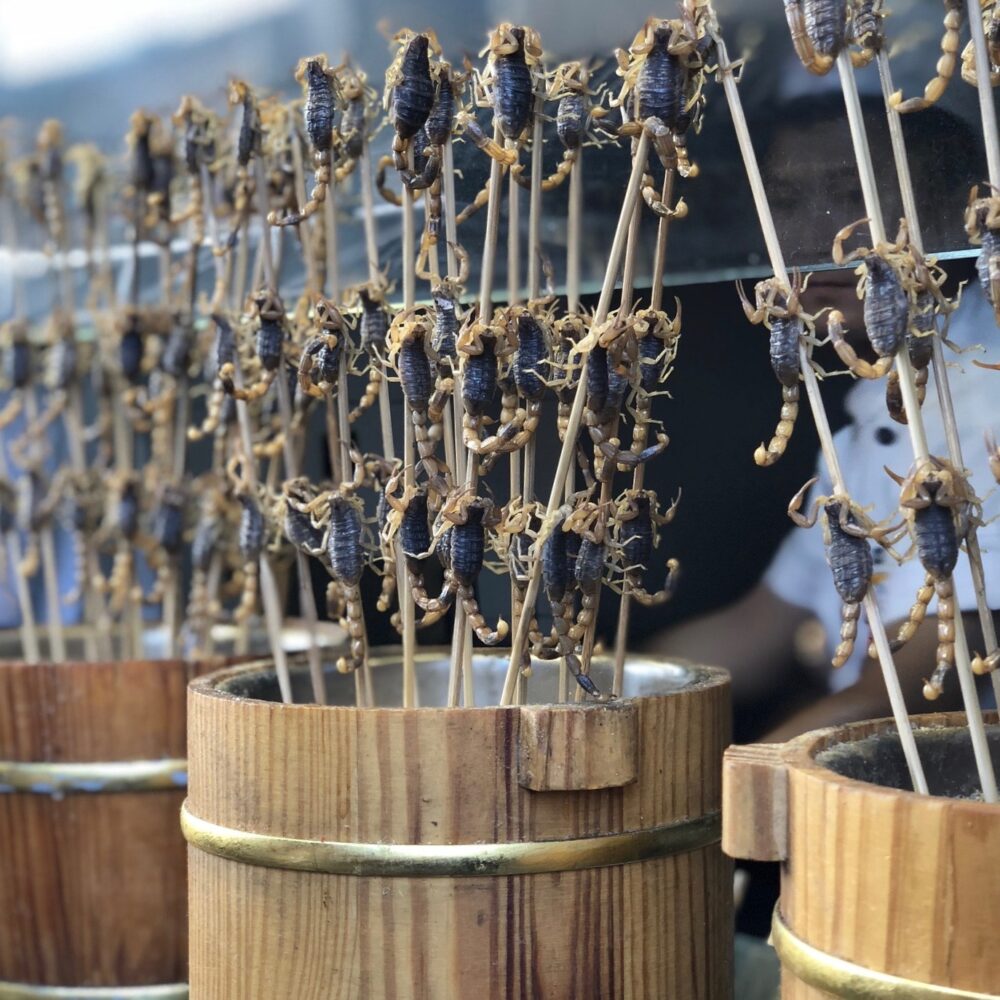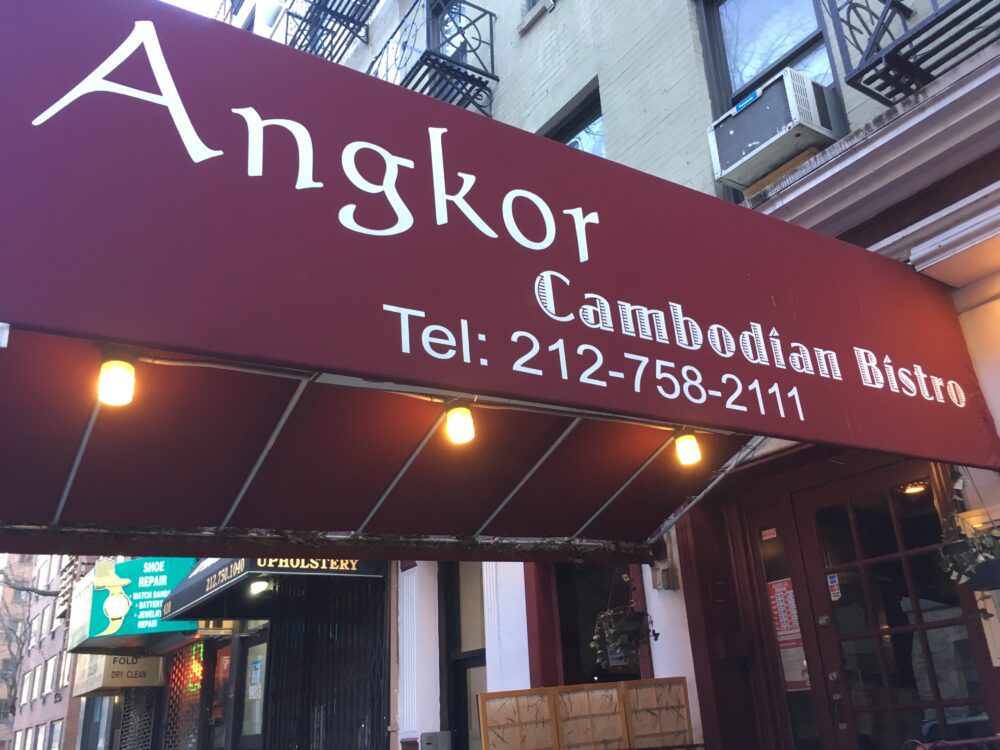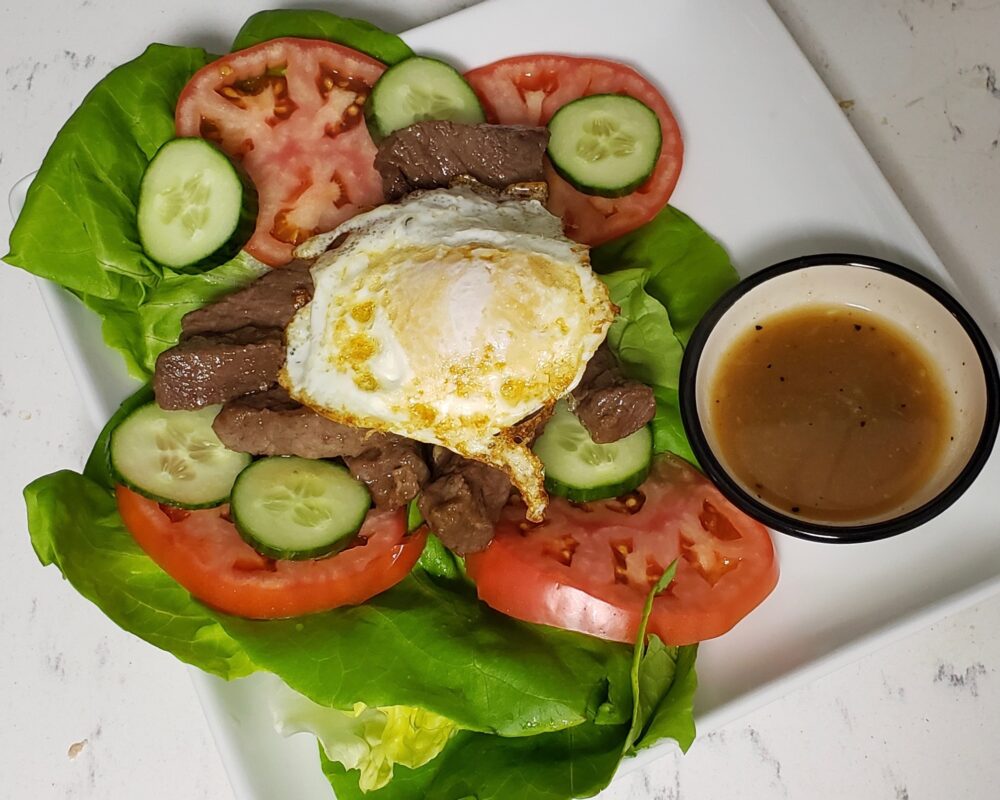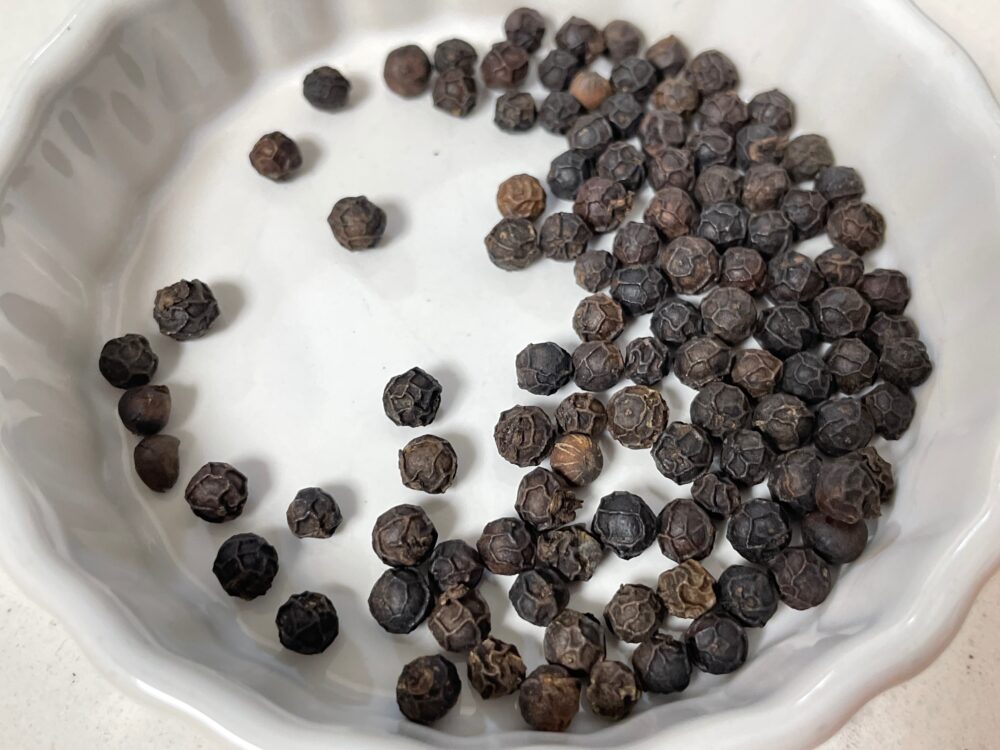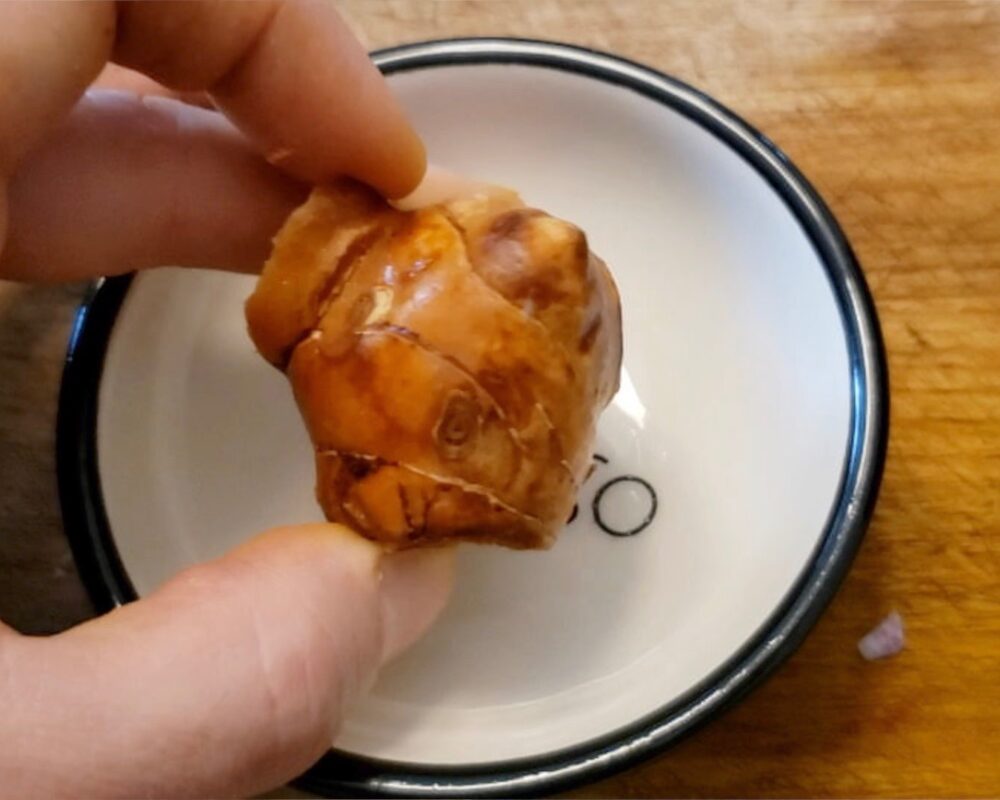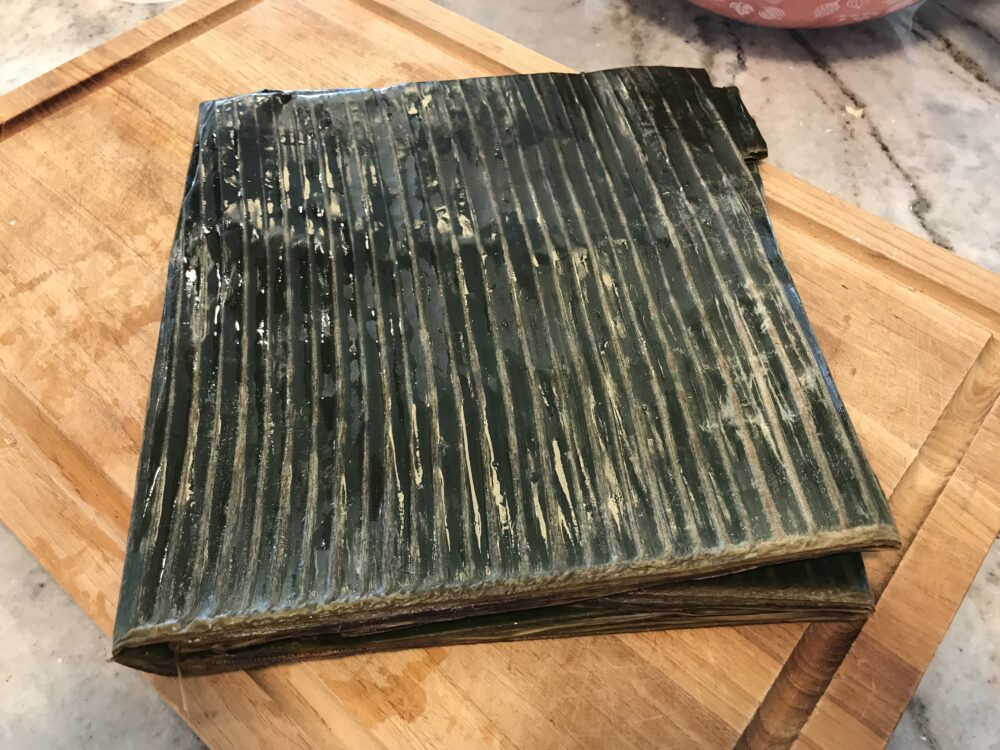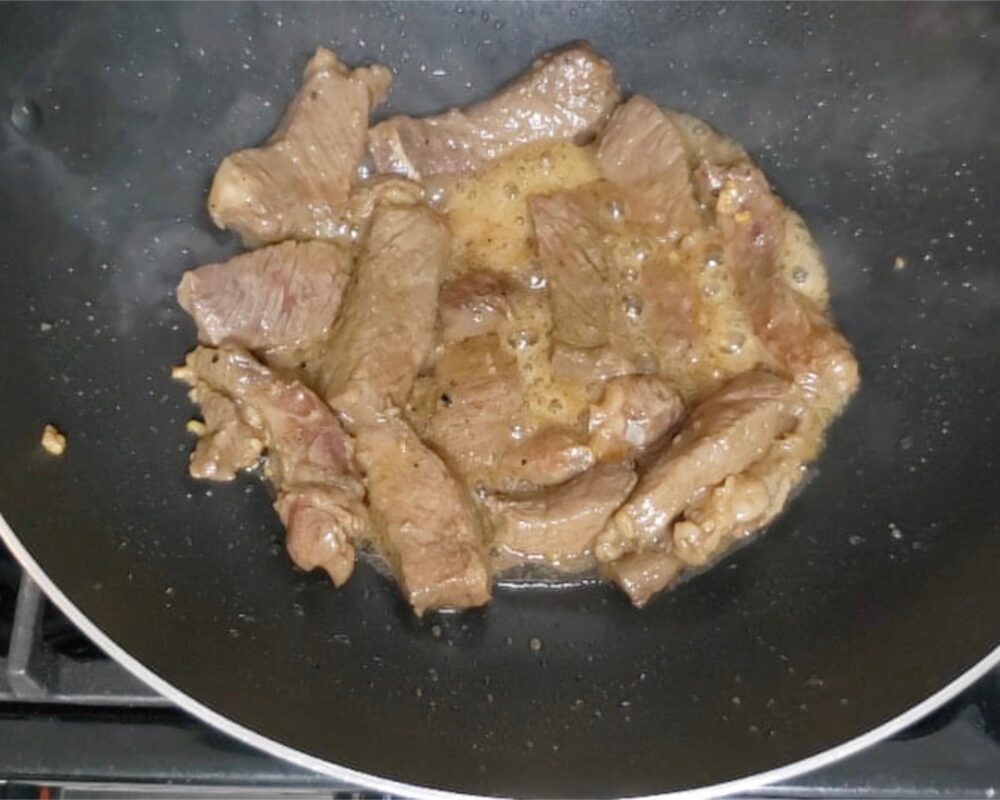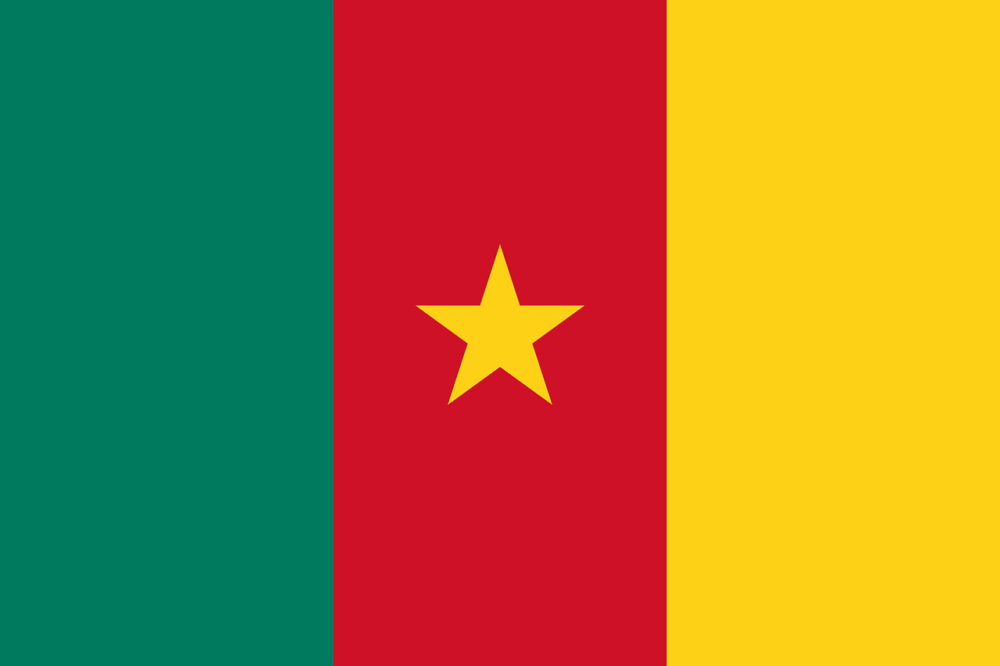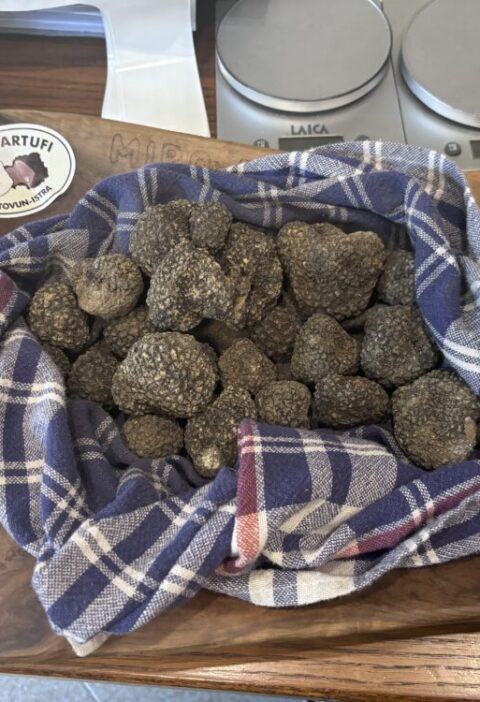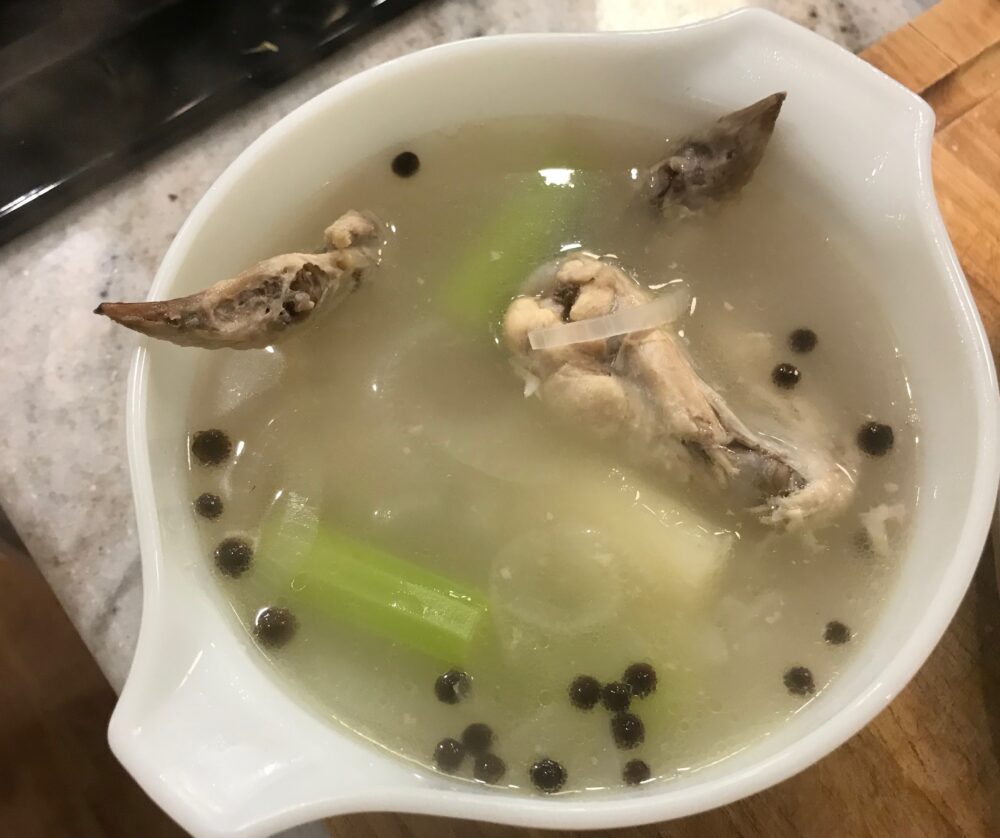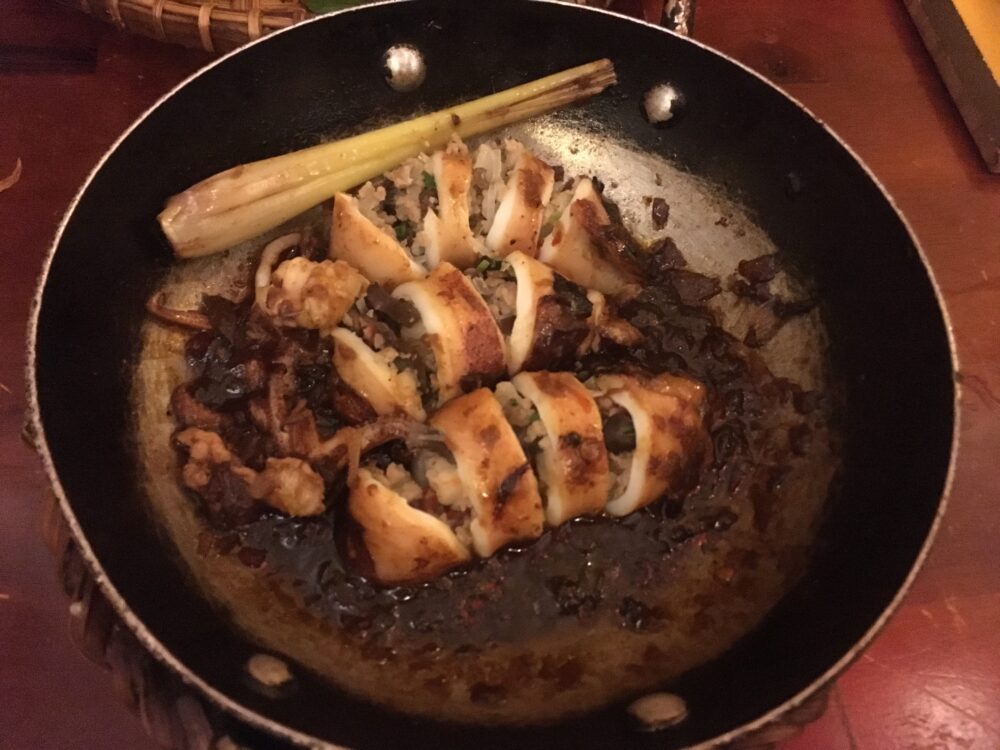And we’re back.
We took a few weeks off for a nice family vacation visiting a country that Sam and I will be cooking in the coming weeks. hint: it begins with the letter C.
We’ll get to that soon enough but this week we are conquering our first C country and surprisingly our first visit to East Asia. This is some of my favorite cuisine and I am so thrilled to attempt to re-create the flavors of Cambodia with Sam.
THE PLACE AND ITS CUISINE
Cambodia is in southeast Asia surrounded by Thailand, Vietnam, and Laos. It lies on the Gulf of Thailand and the Mekong, Sap, and Bassac Rivers all flow through parts of the country so fish is very important here.

Perhaps the most famous site in Cambodia is called Angkor Wat, a massive temple and ruins complex where many people flock to every year. It has been on my bucket list for as long as I can remember.
The Khmer people of Cambodia went through some major and tragic hardships in the later part of the 20th century and its cuisine is just recovering and finding its own identity again. But it is as delicious, aromatic and as rich (although not as spicy) as the cuisines of Vietnam and Thailand which gets a bit more attention in other parts of the world.
Much of Cambodia’s cuisine is influenced by the French who had control of the country for many years along with neighboring Vietnam so there has been a lot of back and forth of dishes and ingredients (see Lok Lak, below). There is also a large influence from Indian and Chinese cuisine.
Some of the most important ingredients in Cambodia are fish (especially fresh water fish), rice, and bread. Flavorings are varied and aromatic from liquids like fish sauce and coconut milk and herbs like lemongrass, makrut lime leaves, galangal, and turmeric.
Much like Thai curry pastes, Khmer cuisine often features a kroeung which is a paste made from ground or pounded herbs and spices, like chili peppers, lemongrass, garlic, and many other possibilities.
There is also a distinction between royal cuisine (decadent dishes that were created for a King) and peasant or everyday food. We’re going to be making one dish from both those categories.
There are also lots of adventurous possibilities to eat in Cambodia, including fried tarantulas, scorpions on a stick and grilled snake, if that’s your thing.
Traditional Dishes:
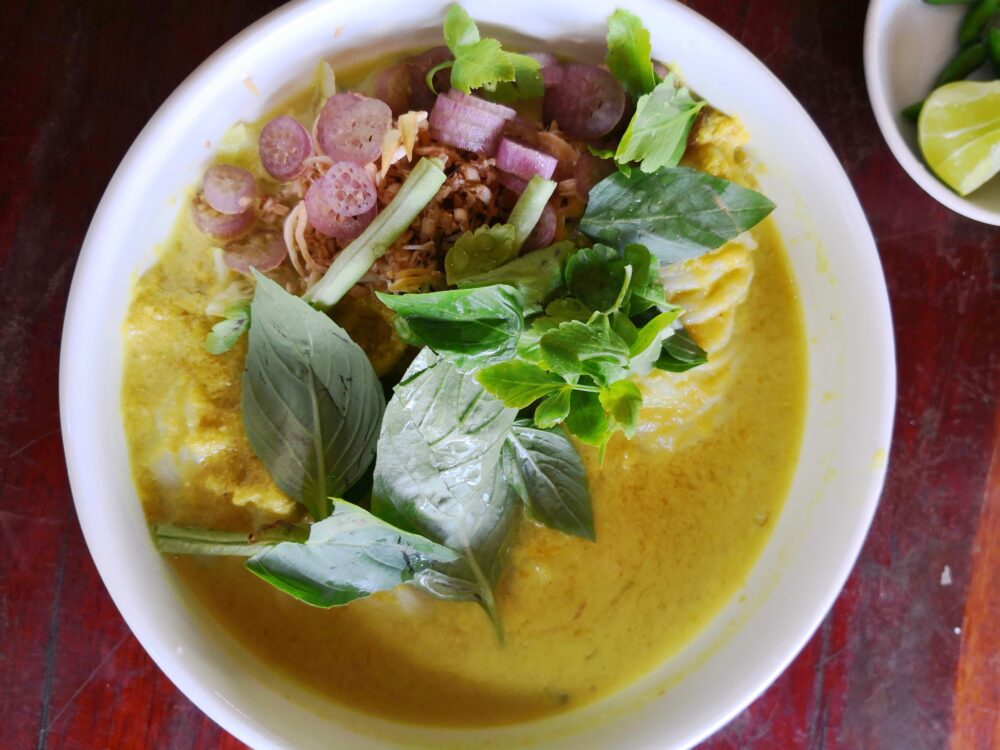
NUM BANH CHOK – also known as Khmer noodles, this breakfast dish is comprised of fermented rice noodles, green curry fish sauce, with herbs and vegetables
BAI SACH CHROUK – another common breakfast dish, this is marinated and grilled pork slices served with a healthy amount of rice
SAMLAR KARI – an aromatic chicken curry in a thick coconut gravy with distinct herbs pounded into a red kroeung paste

CHA KDAM – especially popular in the Kampot province, whole crabs are grilled and served with lots of Kampot peppercorns
CAMBODIAN (KHMER) FOOD IN NEW YORK
Since I’ve lived in NYC, we’ve had one or two Cambodian restaurants that have come and gone. There even was a Cambodian food truck at one point.
But as of this writing, we don’t have an official dedicated Cambodian restaurant. If I had written this blog post a few years ago, I would have mentioned the great Angkor Cambodian Bistro. Well, I still mentioned it, but unfortunately they are no longer open. So you can really just experience it now through my blog post on their Loc Lac.
The only other vaguely Cambodian restaurant in the city is the local sandwich chain Num Pang. I haven’t visited in a while, but I always liked their sandwiches and bowls, including their Tiger Shrimp and Duroc Pulled Pork. It will have to suffice for now.
THE VIDEO
I actually think this is one of our funnier videos. To be honest, they all crack me up, but Sam has me rolling during Cambodia. Especially when he compares his belly muscles to mine.
Sam has strong opinions on one of the main ingredients in the dishes: fish sauce. He makes it clear he is not a fan of “funky flavors.” He is very interested in muting those flavors with other ingredients like sugar. Lots of sugar.
We also embark on an art project using banana leaves to create little boats for the fish curry. Sam’s craftsmanship really shines. Mine needs some work.
THE DISHES
Both dishes we chose are ones I’ve tried before here in NYC. I loved them so much I was really eager to re-create them at home. They also represent two different styles of Khmer food ranging from royal food created for kings and more everyday food inspired by a Vietnamese dish.
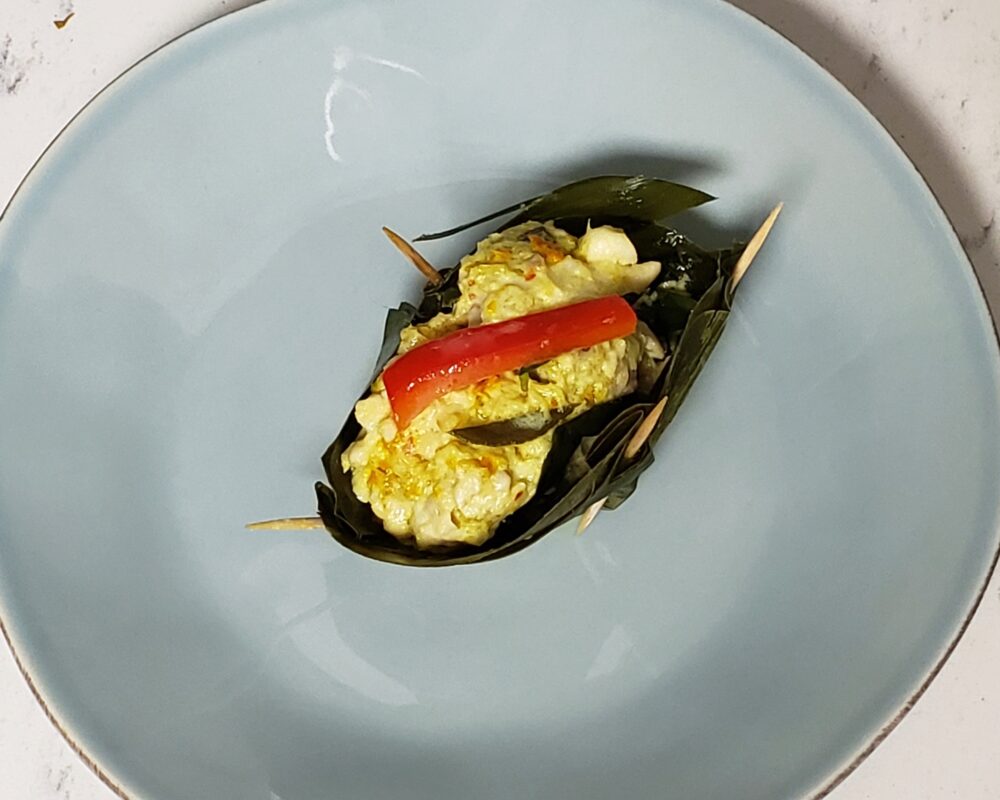
The more difficult of the two is called Amok Trei and is essentially an aromatic fish curry mousse steamed inside a banana leaf. I had something similar at a now-closed Thai restaurant called Kiin.
It is often considered the National Dish of Cambodia and can be found throughout the country. That being said, today it is really a special occasion dish for most Cambodians who now eat it during festivals, like Bon Om Touk (the Water Festival) in late October/early November.
History says the dish dates back to the Khmer Empire between the 9th and 15th century as a food for royal subjects. Today it is also found in markets and street stalls.
The word “amok” means steamed and “trei” refers to fish. The fish usually used is goby, snakefish, or catfish. These are all freshwater fish that can be found in the lakes in Cambodia. While catfish is available here, I preferred to use red snapper, which seems to be an adequate substitution. There is another version of this dish in Cambodia that is made with snails and is called “amok chok”.
Amok definitely feels royal and luxurious. It’s rather time consuming to make and requires a bit of strength.
First, you need to make a yellow kroeung, which is similar to Thai curry paste, by pounding aromatics and herbs (like lemongrass, turmeric, galangal, and more) in a mortar and pestle until they break down and become smooth.
Then, you need to prepare the banana leaf boats. Next, you fry the koreung and make the fish curry with coconut milk. Finally, you stuff the boats with the curry and steam it all together. Whew!
It is a lot of work, but I promise it tastes fit for a King!
As mentioned above, I’ve also tried the other dish we’re making today at a Cambodian restaurant in New York and am again eager to taste it again. Sad to say that restaurant recently closed, but the flavors still linger in my memory.
This one is called Lok Lak and it’s similar to a Vietnamese dish known as “shaking beef”. In fact, a French chef from Vietnam is probably how this dish came to Cambodia. You also see French influence from the introduction of beef and Chinese influence in the stir fry cooking method and marinade ingredients.
The Khmer version is always served with a dipping sauce made from both lime and the very iconic Kampot Peppercorn, which grows in Cambodia. And it’s usually topped with a fried egg.
SPECIAL INGREDIENTS
A number of the ingredients in these two dishes might be considered special or unique for American kitchens. I’ve been eating and cooking Asian food for quite a while, so I’m probably more well-versed in things like lemongrass, fish sauce, and turmeric than others. Those are pretty readily available so I’m not going to list them here.
Instead, these are really the specialty items that might require a bit more digging to find.
Kampot Peppercorns
Sure, you could probably use black peppercorns in these recipes, but it will not give the magical extra Khmer kick that these special peppercorns provide.
Kampot peppercorn comes from the province of, you guessed it, Kampot. It is only cultivated, grown, and produced in Cambodia and in fact has a certified geographical indication (much like Champagne and Kobe beef).
The flavor is incredibly unique and distinct. It has a fruity and floral flavor with a mild spiciness. Its unlike any black peppercorn you’ve tried before and it’s often considered the best peppercorn in the world. They are really worth seeking out.
Galangal
Sam said this rhizome smelled like cinnamon. That is an interesting observation. Galangal is related to ginger but a lot less spicy. Its flavor is more citrus and piney and much more subtle. It’s also called “Thai ginger” and gives a very distinct flavor to a Kroeung or curry paste.
And perhaps it smells like cinnamon.
Makrut Lime Leaves
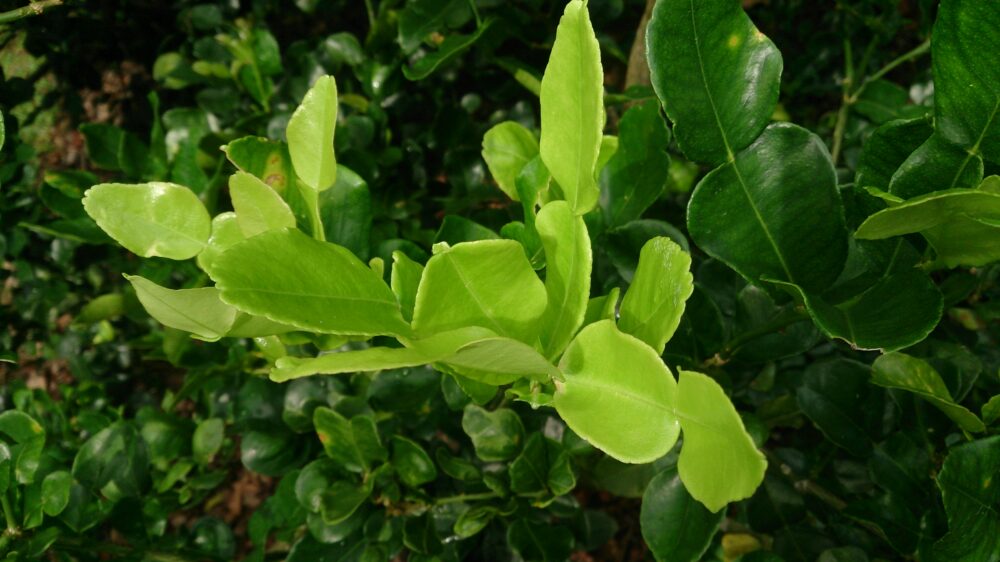
You might also see these called “kaffir lime leaves”, but I learned that term is highly offensive especially in South Africa. So I make it a point to call these wonderful little leaves by its other less-offensive name “markut.”
These are often compared to bay leaves for what they do in Thai, Khmer, or Vietnamese dishes. But I can say they leave the humble bay leaf in the dust.
They come from a small bumpy bitter lime, which are not eaten on their own but often used in cleaning products. The leaves, however, are prized. And for good reason. They add a very complex bright citrusy herbal quality that I continue to crave when I am not eating a dish that contains it.
This is another spice that you should make sure you always have on hand. I do!
Banana Leaves
We’ve used banana leaves quite a few times now during our cooking adventures (see: Antigua and Barbuda and Bangladesh).
Like any ingredient, the more often you use it, the easier it becomes. You should be able to find these frozen at your local Asian market.
Be sure to wash them well and then heat them gently (and carefully) over an open flame to dry them a bit and make them more flexible.
When food, like the amok trei, are steamed inside them, the leaves not only hold in the dish’s flavor but also adds a bit of their own sweet earthiness. Not to mention provide a beautiful serving vessel.
THE RECIPES
Recipes inspired by:
https://www.cambodiarecipe.com
Amok Trei from Cambodia
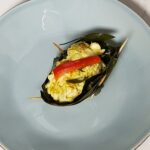
This royal National Dish is a rich flavorful fish curry mousse that is steamed inside banana leaves. You get the balanced flavors of Cambodian food that will leave you wanting more. This is a dish not to miss.
Kroeung
- 1/2 stalk lemongrass (sliced)
- 1/2 tspn turmeric root (chopped)
- 1 tspn galangal (chopped)
- 1 makrut lime leaf (also known as kaffir lime leaf) (chopped)
- 3 cloves garlic (minced)
- 1 shallot (minced)
- 1 small dried chili
Fish Curry
- 1/2 pound firm white fish (like snapper, cod, perch, or bass)
- 1 tbspn vegetable oil
- 1/3 cup coconut milk
- 1/2 tspn palm sugar
- 1/2 tbspn fish sauce (sliced into long pieces)
- 2 makrut lime leaves (also known as makrut lime leaves) (sliced)
- handful of spinach leaves (sliced)
- salt (to taste)
- banana leaves (washed and dried)
Garnish
- coconut cream
- 1/4 red pepper (cut into very small slices)
Kroeung
-
Add lemongrass, turmeric root, galangal, lime leaf, garlic, shallot and chili to mortar and pestle. Pound until blended and forms a paste.
-
Alternately, you can use a food processor but don't over pulse.
Banana Leaf Boats
-
Prior to making curry, wash and throughly dry banana leaves.
-
Cut a large circle out of the leaves and use toothpicks to create a boat or bowl to hold the curry in place.
Fish Curry
-
Heat oil over medium. Add kroeung and cook gently until aromatic.
-
Add coconut milk and bring to boil, stirring constantly.
-
Add palm sugar, fish sauce, salt, and sliced lime leaves, stirring constantly.
-
Add fish slices and stir gently. Cook for a minute or two – not allowing the fish to cook all the way through.
Steam
-
Place spinach slices into the bottom of the banana leaf boats.
-
Add fish curry on top of spinach.
-
Put boats into a steamer and steam on low heat for about 20 minutes.
Garnish
-
Remove from steamer and garnish each with a little bit of coconut cream and small slices of red pepper.
Lok Lak Recipe from Cambodia

Also called shaking beef in Vietnam, this delicious steak stir fry features a sweet and salty marinade and is served with an irresistible sauce made from lime juice and kampot pepper.
Marinade
- 1 pound beef steak (cut into slices)
- 2 tbspn oyster sauce
- 2 tbspn sugar
- 2 tbspn fish sauce
- 2 tbspn garlic (minced)
- 1 tbspn soy sauce
- 1/2 tspn kampot pepper (ground)
Dipping Sauce
- 1 lime (juiced)
- 1 tspn kampot pepper (ground)
- 1 tspn salt
- 1 tspn fish sauce
- 1 tspn palm sugar
- 1 tspn garlic paste
- 1 drop water
Salad and Garnish
- 3 tbspn vegetable oil
- lettuce leaves
- 1 tomato (sliced)
- 1 cucumber (sliced)
- 4 eggs
Marinade Meat
-
Mix together oyster sauce, sugar, fish sauce, soy sauce, minced garlic, and kampot pepper. Add steak slices and stir well to combine.
-
Refrigerate and marinade for a few hours.
Stir Fry
-
Heat 3 tbspn vegetable oil in a wok to medium high. Add meat and stir fry for 5-10 minutes.
Dipping Sauce
-
Mix together juice of one lime, kampot pepper, sea salt, fish sauce, palm sugar, garlic paste, and a drop or two of water. Mix well until all combined and sugar dissolves.
Serving
-
Serve meat on top of lettuce leaves with sliced tomatoes and cucumbers. Top with a fried egg.
-
Serve dipping sauce and white rice on the side.
HOW WE SCREWED IT UP
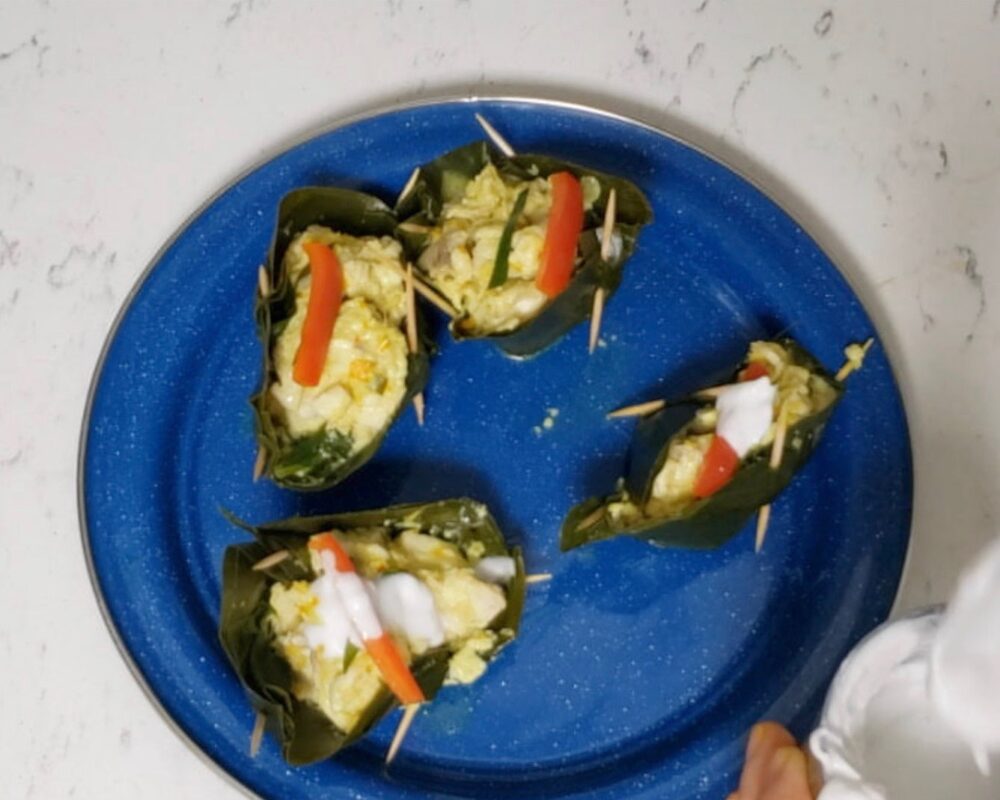
She let’s start with the royal Amok Trei. Would a King accept my version? Probably not, but that’s ok.
It still came out very flavorful and I enjoyed it but I could tell there were some issues. Many of the photos I had seen (and the version I tried in the past) had a much darker red hue. Mine was much closer to yellow, which I don’t think is wrong per se but a bit more turmeric and chili could have remedied that.
Mine was also quite thick – perhaps coconut milk instead of coconut cream (which I updated in the above recipe) would have given it a thinner texture. I also could have added eggs for a more mousse-like consistency.

I did get many of the flavors right, but I overcooked the fish and found it dry in the final presentation.
I also managed to overlook the Lok Lak. Again, the flavor was strong but the steak was chewy and tough. I also probably should have considered using a cut like flank instead of sirloin.
Again, it’s all a matter of technique and cooking time, which I’m still figuring out. But in terms of the Khmer ingredients and flavor, both dishes were singing.
SAM’S REACTION
Whenever there is rice and soy sauce on the table, Sam eats very simply for dinner.
I didn’t think he was going to try the fish mousse, but I did get him to taste the stir fry sirloin. And he clearly liked the Lok Lak. Of course, it contained some of the palm sugar he tried earlier in the project, so how could he not have liked it?
He still went back to eating his rice (which he gave 2000 stars, by the way), but at least he took a little taste of Khmer food.
NEXT TIME
Sam has been learning about Cameroon two ways. Not only are we cooking some of their popular dishes, but he’s been taking a soccer class with a Cameroonian coach and proceeds go to help children in the Central African country…




